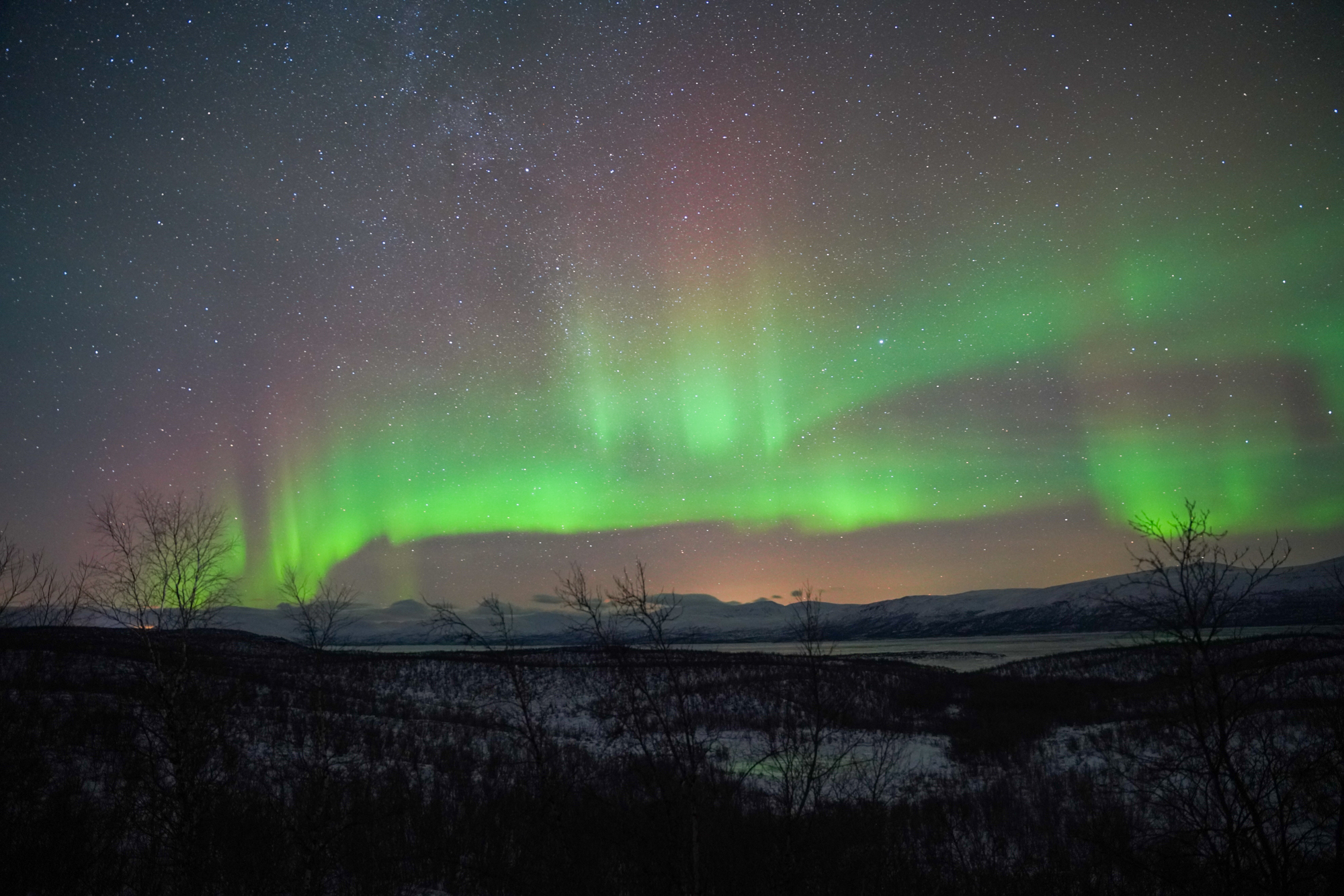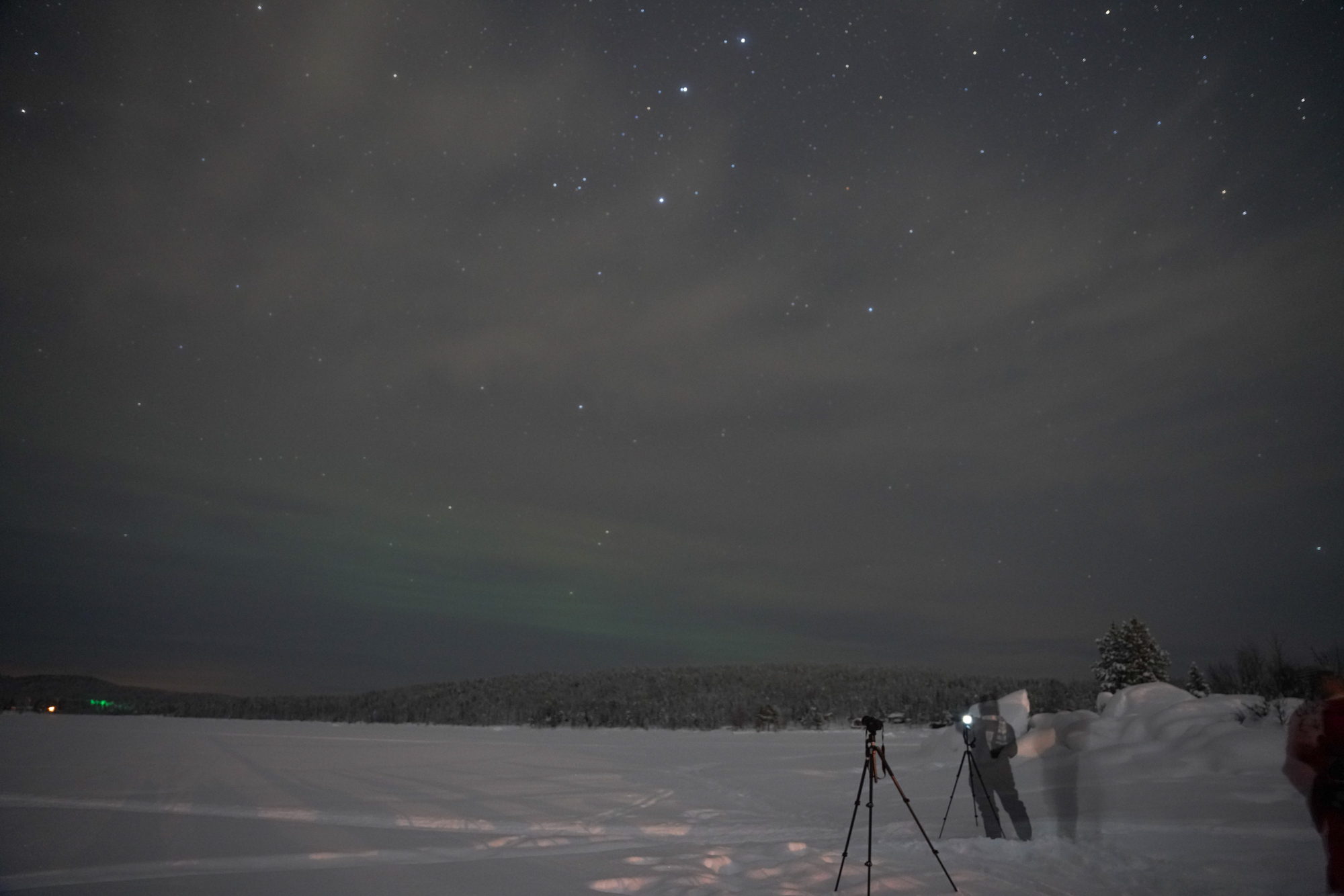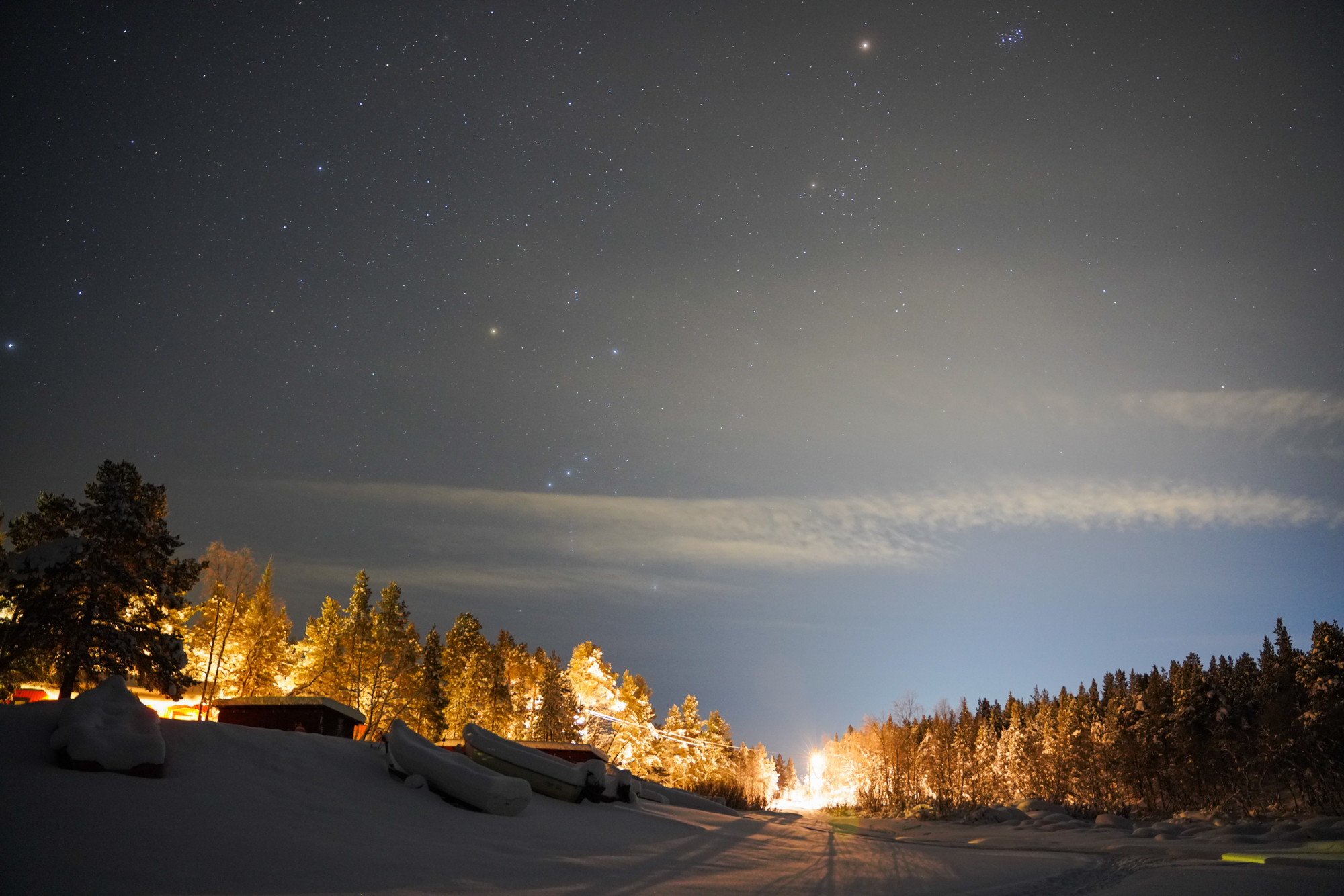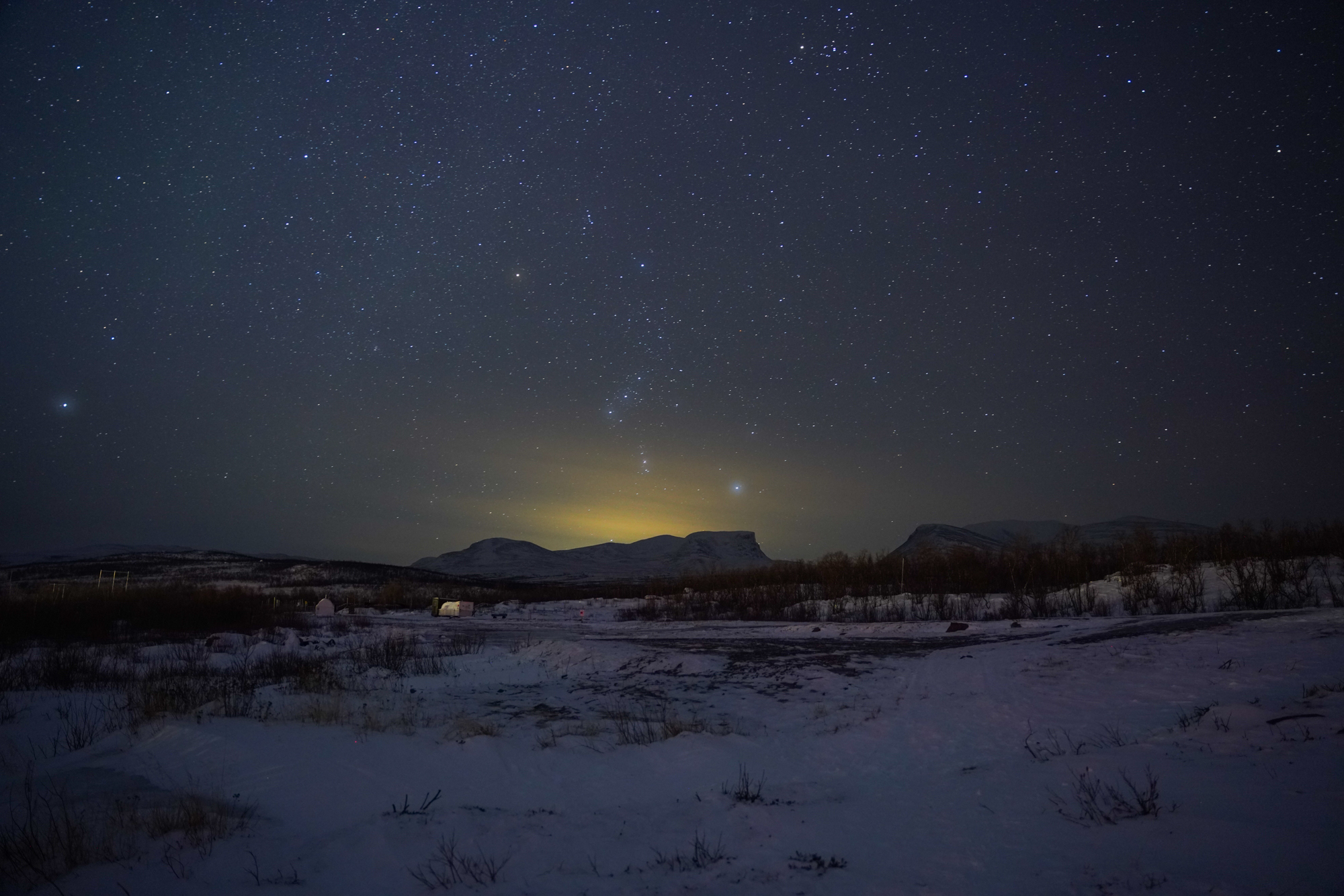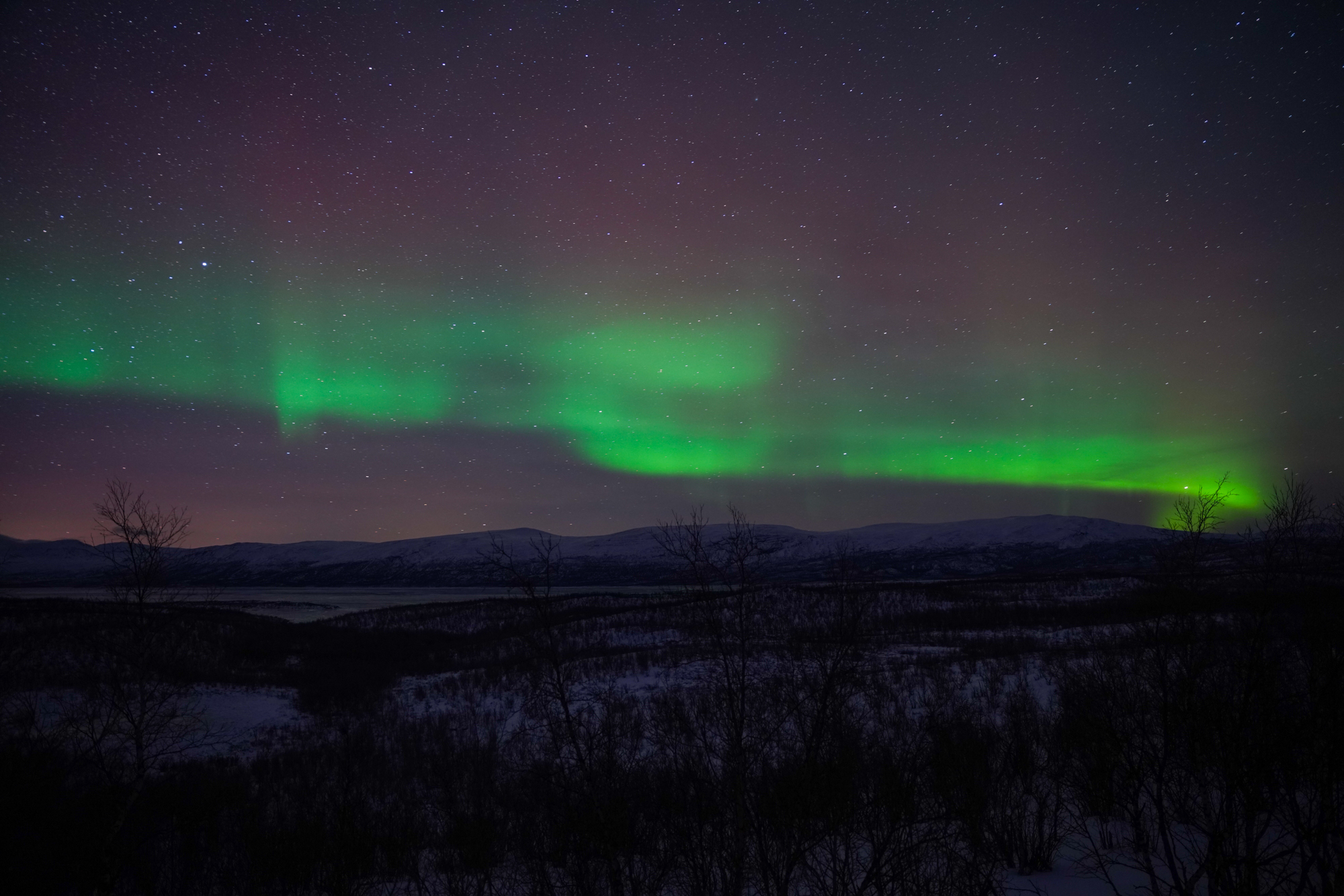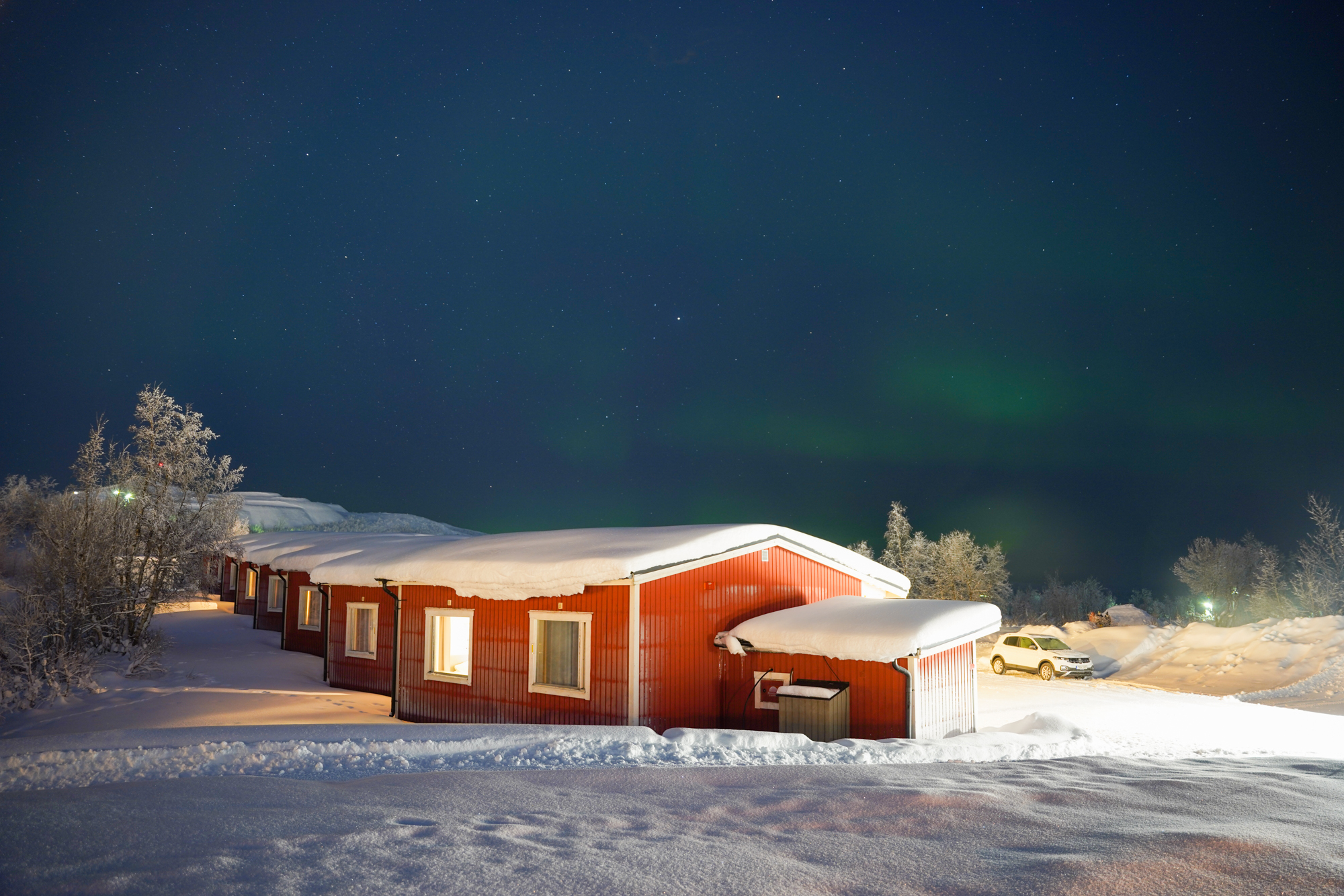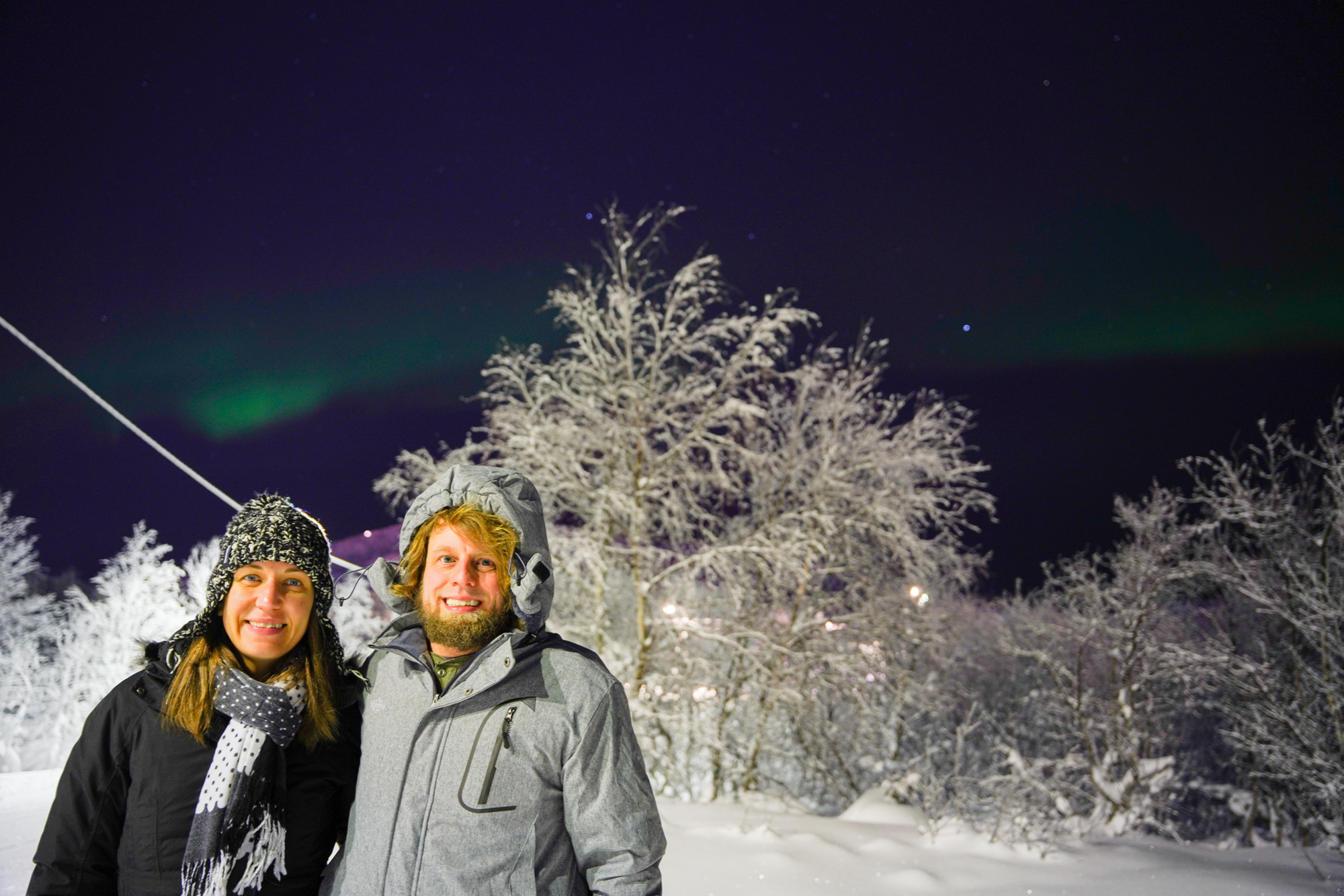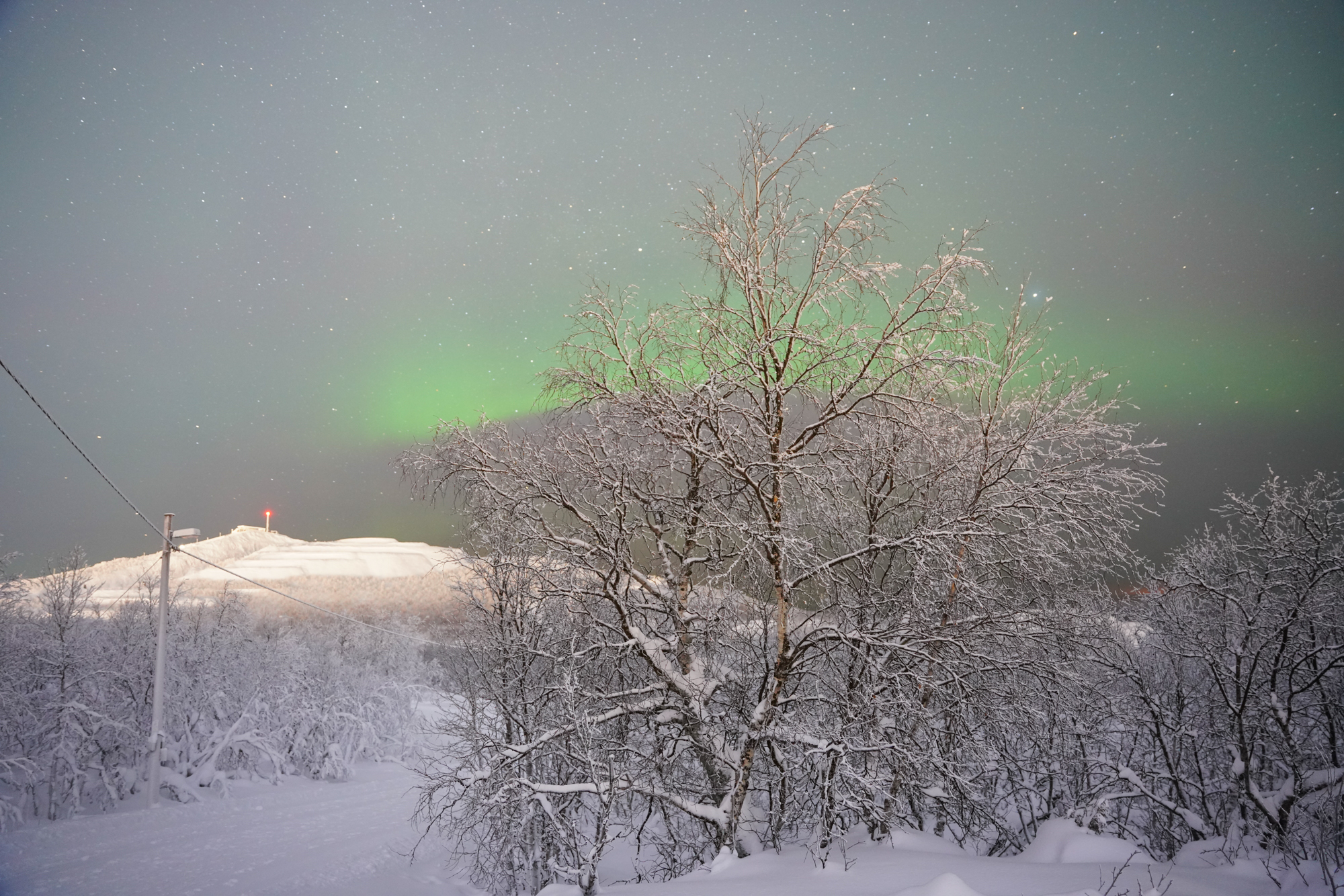Published by Jeremy. Last Updated on October 26, 2023.
Disclaimers: Our site uses demographic data, email opt-ins, display advertising, and affiliate links. Please check out our Terms and Conditions for more information. Listed prices and attraction details may have changed since our visit and initial publication.
When it comes to seeing the northern lights, you simply cannot go outside, look up, and expect a show (well, most of the time at least).
In fact, there are so many factors that go into seeing the aurora borealis, be it sun activity to local cloud cover, that makes giving guarantees of seeing the lights absolutely impossible. So if you are looking to travel on an aurora borealis vacation, you need to go into things knowing that, sadly, nothing is guaranteed.
That being said, there are many things you can do when planning for a northern lights trip that can help increase your odds of success. So in this one we thought we’d share our top tips and arrange them all from the broadest to the most focused things to keep in mind!
✈️ Book Your Next Trip
- • Planning a trip? Find a flight deal.
- • In need of a room? Check out hotel and apartment prices.
- • Taking a cruise? Find a cruise itinerary for your journey.
- • Don't overlook picking up a rental car or day tours as well!
Plan Around the Solar Cycle
The solar cycle is something that isn’t terribly well understood, but it is generally believed that solar activity runs on approximately 11-year cycles.
At the peak of these cycles, solar activity increases with stronger and more frequent events- meaning more chances to see the aurora borealis over when the sun’s activity is at a minimum roughly five to six years later.
While we would not say to wait 5+ years for the next cycle peak if we are near a minimum, if a cycle peak is projected to come up sooner rather than later, you may want to book that trip now instead of waiting. Anything within +/- two years of a projected peak sounds like a good time to go aurora spotting to us!
Current projections suggest peak solar cycles will be around 2025, 2036, 2047, and 2058. Solar minimums, with the lowest activity, are likely shifted by five years or so, roughly 2030, 2040, 2050, and 2060.
Plan Around the Equinoxes
So, let’s say you have a year picked out to go on an aurora borealis trip, what next? Well, you may want to plan a trip around the vernal or autumnal equinoxes as the position of the Earth is often better suited to capture more radiation at these times.
You can read more about why there is often more aurora activity at the equinoxes here, but broadly speaking it has to do with the angle of the poles relative to the sun. During the equinoxes, the direction of the poles are at a right angle to the sun, and the Earth’s magnetic field pulls the radiation toward the poles ever-so-easier. This, in turn, excites electrons in the air to move to a higher energy state, giving off light in the process which we know as auroras.
There are other reasons why the overlap works great, like weather (which we will talk more about below), but the poles at their respective winters are pointed away from the sun, and activity is, to some degree, reduced. (On the summer solstice the pole is pointing towards the sun, but the poles also have 24 hours of daylight so seeing any activity is impossible).
Get as Close to the Poles as Possible
Now you may have a rough idea of when you want to see the northern lights, but how about where? As you may have gathered from the above, you need to head to the poles, which for most means heading to the extreme north- particularly high up into the Arctic Circle.
Within the Arctic Circle, you are quite close to the poles which are pounded with magnetic radiation at all times. This, of course, gives visitors the best chances to see the aurora insofar as it is dark outside, with clear skies, and a modest degree of solar activity. As you go further and further south, say, to capital cities in the Nordic countries like Olso and Stockholm, you need an especially strong solar event for the aurora to grow large enough to be seen (in terms of frequency, over a season think days not weeks here- it is quite rare).
The size of aurora ovals is measured by a scale known as the Kp-Index. You can look at this one several ways, but broadly speaking it measures disturbances in the electromagnetic field by size. If a disturbance is small, such as KP 0, 1, or 2, aurora activity is likely contained within the Arctic Circle. In exceptional events, where the magnetic disturbance is high (KP 7, 8, and 9), the aurora oval grows and can be seen much further south.
But since we’re talking about the difference between aurora activity visible daily/weekly (in the north) versus maybe just once per year (further south), if that, you have really only one choice here- go north!
- KP-Index forecasts are typically best the day of or, at most, 24-48 hours ahead of time when current solar conditions are known. We use the example here to illustrate how the aurora oval grows over the Earth with increasing activity. When planning a trip weeks or months in advance, we recommend going as far north as you can for the best odds overall.
Take Local Climates Into Account
Now let’s say you’re set on going to the extreme north. This band still gives you an array of countries to consider be it in the Nordic countries (Sweden, Finland, Norway, Iceland), Greenland, Canada, Alaska, and Russia to name a few.
When you start settling on specific towns to visit, you will want to check the local climate as cloud cover can greatly impact your chances of seeing the aurora borealis outright (yes- a KP9 event with cloudy skies still means no aurora for you!). Picking a destination with 75% average cloud cover vs 10% average cloud cover during your visit very much could make or break your chances of seeing the northern lights, especially on short trips!
In a previous section we mentioned that booking around the equinoxes has a tangential benefit around the weather, and this is because many of the destinations mentioned above have lower precipitation rates at these times than they do in the dead of winter. Less precipitation often means less cloud cover, and clear skies mean greater chances of seeing the northern lights. Is this foolproof? Not at all, but it could be a good starting point for research purposes.
But there is one big trade-off for those who want to visit around the equinoxes over the solstice- hours of light. The further away you get from the winter solstice, the more hours of sunlight you will have, which means less time to possibly catch the aurora. That being said, we will always pick better weather odds over daylight hours because 100% cloud cover means no aurora will be seen!
Find a Dark Sky Destination or Rain Shadow
In tandem with looking at climate, you may want to look into dark sky and/or rain shadow destinations as well. Dark sky destinations are where overall light pollution is quite low (read: small towns and/or extremely remote camps over bigger cities) and rain shadow destinations are where mountains break up the clouds as they move overhead and produce statistically more clear skies than other places nearby.
Abisko, Sweden, is a perfect example of both and is considered to be one of the top places in the world to see the northern lights for both of these reasons. First off, the permanent population is roughly 85 so light pollution from infrastructure is incredibly low. Second, the nearby mountain casts a rain shadow over the village as well. Is it always clear 100% of the time? No. But when it is, oh my can you see the stars. Compare this to Kiruna, where we stayed (population approx 23,000, home to an active iron mine, and no rain shadow), and the differences were striking.
- What about seeing the aurora during a full moon? While it’s true that a full moon does put more light into the sky, most photographers don’t think it impacts the aurora too much, especially in dark sky destinations and/or with stronger aurora activity. That being said, going during a new moon can’t hurt if you’re flexible as light from the moon probably does impact low KP events to a small degree.
More Days Are Better Than Fewer
All the best planning in the world can, sadly, be for nothing when it comes to the northern lights if a stretch of solar calm or thick clouds hit during your stay. As solar activity and cloud cover can only be predicted a few days out (and even then change within an hour), you still have to get lucky that all the factors align to some degree.
As such, if you have the capacity, it is a good hedge to stay as long as you can in an aurora zone to allow for all of these factors to work in your favor.
We had four nights in Kiruna and had read that visitors to nearby Abisko had a ~80% chance of seeing the lights if they stayed three nights (Kiruna rates were unknown). On day one we saw nothing when it wasn’t cloudy. On day two we saw nothing when it wasn’t cloudy. Day three was cloudy the entire night. On day four we saw a spectacular-to-us-but-only-average aurora when visiting Abisko. Those who came just one day before us had a spectacular show. Those who came after us had some bad weather in the forecast.
None of this could really be predicted when we booked our trip a month ahead of time, and it all really came down to luck. But in the future, I would honestly not visit an aurora destination for less than a week if I could justify the time and cost. But if four days is what you can afford with the alternative being zero, take the four, pay more to get to the darkest, clearest skies possible, and cross your fingers that the odds will be in your favor.
- Be sure to book some daytime activities like dog sledding, cross-country skiing, and more to make the trip enjoyable even if you don’t see the aurora borealis. This way you’ll still have a great vacation even if you strike out on the aurora borealis!
- Check out some of our favorite things to do in the Arctic Circle in winter here!
Take Night Trips Designed to Spot the Aurora Borealis
For those who are not staying in deep dark sky destinations (and even some who are), you should probably plan on booking night trips out to chase the aurora assuming you do not have a car.
First off, having a driver helps you get away from clouds and find clear skies if the weather near your accommodation is poor. This was the case on both of our tours out of Kiruna where our driver went in the direction of clear skies while Kiruna proper was cloudy.
Second, a good guide can show you what the aurora is if you have a low-intensity event. During ours, the aurora appeared white (not green!) as the intensity was quite low. My camera picked up the full colors you see in this post, but to the naked eye, the weakest auroras looked simply like a cloud or even the haze you see in the Milky Way. Had we not been instructed what to look for, we probably would’ve missed all but the most vivid one.
Finally, for photographers, a guide can help you with camera settings to get a great aurora shot. While I thought I was proficient in astrophotography, I still learned many tricks from our guide outright despite that particular tour being a bust lights-wise. (Our aurora borealis photography tips article can be found here, however!)
Tours are often insanely expensive, upwards of $150-$250 pp or more. Those skilled in extreme winter driving may find a car rental a good option, but note that roads are often permanently covered in snow in the heart of winter and dangerous at the best of times. As such, we cannot recommend this unless you live in a harsh winter destination and have experience in this kind of driving.
- Notes: During peak travel aurora tours can and do book up early. We had to rearrange our ideal schedule several times a few weeks before our visit as some of our selected days were not available. Check options with your hotel or 3rd party companies like Viator sooner rather than later. However, planning around availability and local weather can be luck too- our Abisko trip just happened to work out to the clearest night.
Check Aurora Apps and Websites
For those who do not want to take a tour, aurora apps like My Aurora Forecast and websites like Space Weather Live and SWPC will be your friend when you make it to your destination.
We have a guide on how to read aurora forecasts that we recommend you check out, so in this one, we want to keep it simple in saying that data is your friend to check local conditions in the days and hours leading up to your nights. While not perfect, these certainly give you a better idea of when to go out and look up!
- If you want to use an app to send you push notifications in the middle of the night, you may want to put your phone in Do Not Disturb mode and allow the individual aurora app to be an exception. Otherwise, you may get audible alerts to all notifications!
Look to the North – Especially 8 pm to 2 am
As the aurora oval often covers the Arctic Circle, one of your final hedges to see the northern lights is to go outside and look north.
This tip came from our friend Ordinary Adventures and was as wise as it is simple. To be blunt, our notification apps never gave us push notifications for our very best viewings- we happened to go outside and look. When we did get push notifications, it was, of course, cloudy in our specific location.
This was rather unfortunate when the app would wake us up in the middle of the night, but we will say that we had our best luck between 8pm and 2am the night we did see the aurora. This is often considered a common experience because the aurora oval moves across the sky as the Earth spins. The times when the aurora is often right overhead is, you guessed it, from 8pm to 2am.
So while the aurora can appear at all hours during the night, especially when it is on the much more intense side of things, we will say go out as often as you can during these hours and look north when all else fails!
Take a Good Camera With a Tripod
Finally, as mentioned above many, many aurora viewers may see faint lights that appear as a wispy cloud that looks white or only lightly green.
If you have a good camera with a tripod, you can still capture great aurora color in these instances as cameras are much more sensitive to these colors in low-light scenarios than the human eye is.
You’ll want to check out our northern lights photography guide to help with this one, but when in doubt put your camera on a tripod, switch to manual mode, shoot 15-30 seconds, at the fastest aperture possible, turn off image stabilization when on a tripod, and use manual focus if you are able, too.
Your phone simply wont cut it unless you are really, really lucky!
- Oddly enough, if you think you are witnessing an aurora event and are not sure if it is a cloud or the aurora, point your camera at it. Even the live view on most cameras and phones may show hints of green that we otherwise cannot see with the naked eye. Aurora vision on cameras is real!
Bonus – You May Have to Keep Trying
Ultimately, seeing the aurora borealis is really all about luck. In this guide, we wanted to share ways to increase your odds of seeing the lights from planning your trip all the way to day-of activities to get out and see the northern lights.
But, at the end of the day, you may not be lucky. We do not have a hard figure for this, but the truth is that a greater-than-zero number of visitors leave an aurora trip without seeing anything at all and an even larger number leave only seeing a weak display like the ones we saw.
For those who want the best aurora experience, with the most intense lights and most awe-inspiring scenes, odds are good you will have to keep trying. This could be as simple as going out again and again during your first visit, or it could mean planning a second trip to another destination outright, or maybe even a third, fourth, or fifth after that.
We hope that if you follow some (if not all) of the tips in this guide that your luck will increase dramatically. But sadly, we cannot say you will be guaranteed to see the lights at all even following these recommendations. As such, you may have to try again and again.
So be sure to book some daytime activities, have fun, and enjoy your trip no matter what. The Arctic Circle is a blast whether you see the aurora borealis or not!
Have you been able to spot the northern lights on a trip? What did you do to increase your odds? Comment below to share!
About Jeremy
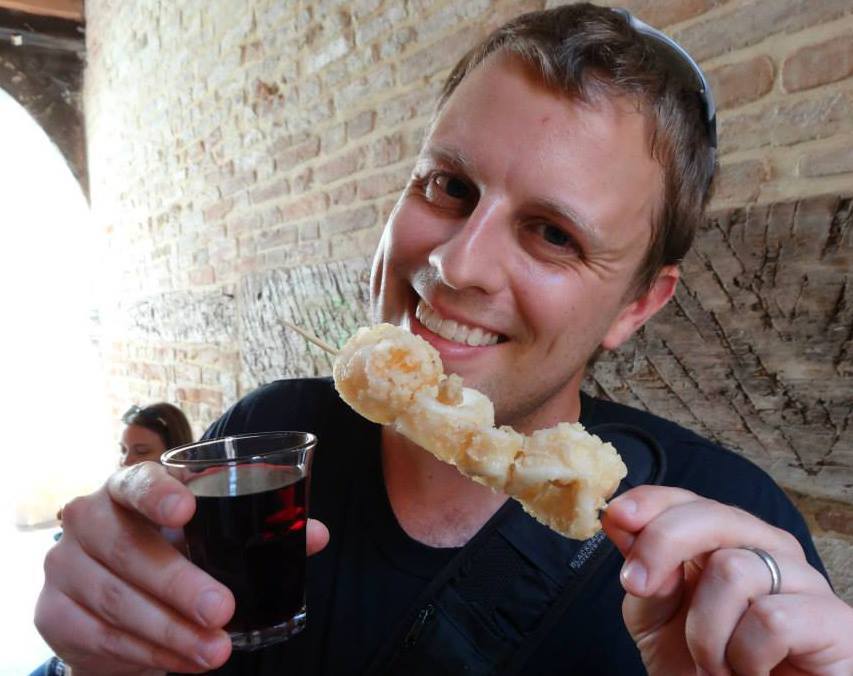
About the Author: Jeremy is a full-time travel writer based in Pittsburgh and primary author of this site. He has been to 70+ countries on five continents and seeks out new food, adventure activities, and off-the-beaten-path experiences wherever he travels.
